Topics
Category
Era
School of India for Languages and Culture (SILC)
The School of India for Languages and Culture (SILC) was established in 1979 as a weekend school by Indian American parents to help their children learn and become familiar with their heritage. It is a non-profit, secular organization run by volunteers.
SILC was created when five former teachers of a St. Paul school called Bharat School decided to reorganize that institution as a non-profit organization. As immigrants from India, they shared the goal of immersing their children in Indian languages and culture in a secular, all-inclusive environment.
SILC is one of the oldest such institutions in North America and uniquely inclusive. Unlike many other ethnic schools in Minnesota and around the country, it is not associated with any religious, regional, or ethnic groups. The school, held September through June, originally met on Sundays at the Commonwealth Terrace on the St. Paul Campus of the University of Minnesota, and for a short time in the St. Anthony Elementary school. It changed to Saturdays after it moved to Como High School in 1992.
Although language classes, electives, and other offerings have changed over the years, depending on student needs and volunteer availability, the school’s schedule has remained the same. The day starts at 10 a.m. with an invocation followed by language classes, a break for milk and cookies, and social studies (originally called General Knowledge), a class that teaches students about such topics as Indian festivals, geography, and history. The last session is an elective that allows students to choose from offerings such as dance, music, yoga, and cooking. After an assembly where students sing the national anthem of India, the school ends at 12:30 p.m.
SILC’s curriculum has evolved, too, with many activities added to enrich and supplement the language and culture classes. While yoga and dance have been mainstays, other classes such as the SILC Achievement Project (SAP) have helped students produce the books Indian Cooking and India-on-a-Page (a facts book on India) and discuss issues critical to growing up in dual cultures. Similarly, classes such as cooking, music, art, and even coding have been offered.
Extra-curricular activities such as field trips, visits from accomplished performers, speakers and special guests supplement the learning. SILC Mela, a social gathering as well as a fund-raiser, and Graduation Day (in June) are regular events that showcase the learning students have acquired over the year. Other celebrations, such as Indian festivals, are organized annually. In 1998, a pre-school was started to introduce children between the ages of three and five to their Indian heritage. Held once a month, it was a way to get younger students, particularly siblings, to attend SILC and become regular students.
Each year, a special committee publishes a yearbook that has become a repository of SILC’s thirty-nine years of history. As the internet and social media became mainstays in the 2000s, SILC established a website and used social media and blogs to publicize and connect with potential students. Over the years, its collection of books and memorabilia has grown into an extensive SILC library. A laptop computer purchased for the school has helped digitize many of the materials and is used by students to make presentations. SILC has also started publishing books on India in limited quantities through the participation and investment of a few SILC members.
Since its inception, SILC has participated in activities outside the regular school program, often with other organizations. It has regularly participated in the Festival of Nations, performing in the children’s program and organizing the cultural exhibits. It also participates in India Association of Minnesota (IAM’s) events, originally at the Independence Day Picnic and later in the IndiaFest (also called India Day).
SILC students have participated in events like the Asian Heritage Dragon Parade and the Flint Hills Children’s Festival, and with the Minnesota History Center and the Parents of Indian Children (PIC workshop). In 2003, SILC helped start and organize Camp Masala, a two-day residential program for children adopted from India. Often, SILC students are called on to participate in international festivals, at schools, and at events such as the Burnsville International Festival May Day Parade.
Bibliography
School handbook. Library of the School of India for Languages and Culture, St. Paul.
School of India for Languages and Cultures.
www.silcmn.com
School of India for Languages and Culture yearbooks (1985–89; 1992–93; 1997–2010; and 2015–16). Library of the School of India for Languages and Culture, St. Paul.
OH 88
School of India for Languages and Culture (SILC) Oral History Project
Oral History Collection, Minnesota Historical Society, St. Paul
Description: Twenty-four hours of cassette recordings and 588 pages of transcriptions of interviews with thirteen Indian Minnesotans with connections to the School of India for Languages and Culture (SILC).
http://collections.mnhs.org/cms/display?irn=10469053
Tenth, Twentieth, and Thirtieth Anniversary Commemorative publications (1989, 1999, and 2004). Library of the School of India for Languages and Culture, St. Paul.
Related Resources
Primary
OH 119
India Association of Minnesota Oral History Project
Oral History Collection, Minnesota Historical Society, St. Paul
Description: Includes interviews with members of the India Association of Minnesota (IAM, formerly
known as the India Club), formed in 1973.
http://collections.mnhs.org/cms/display.php?irn=10469083
School of India for Languages and Culture records, 1979–2002
Manuscripts Collection, Minnesota Historical Society, St. Paul
Description: Records of the School of India for Languages and Culture (SILC) which was organized in 1979 to give children of Asian Indian descent in the Minneapolis/Saint Paul metropolitan area a place to learn Indian languages, culture, history, art, dance, music, and yoga.
http://www2.mnhs.org/library/findaids/01292.xml
Secondary
Bhatia, Sunil. American Karma: Race, Culture, and Identity in the Indian Diaspora. New York: New York University Press, 2007.
Junghare, Indira Y. "The Hindu Religious Traditions in Minnesota." In South Asians in the Diaspora: Histories and Religious Traditions, Knut A. Jacobsen and P. Pratap Kumar, eds., 149–160. Boston: Brill, 2004.
Related Images
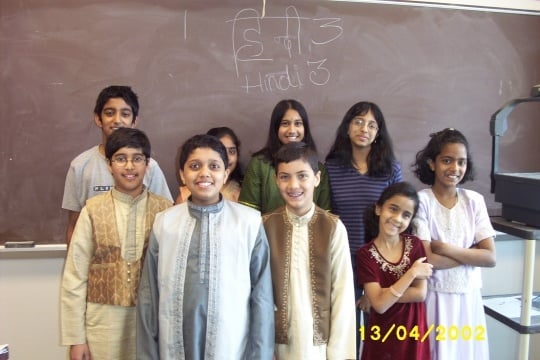
SILC Hindi class
Hindi class at the School of India for Languages and Culture (SILC), 2002.
Holding Location
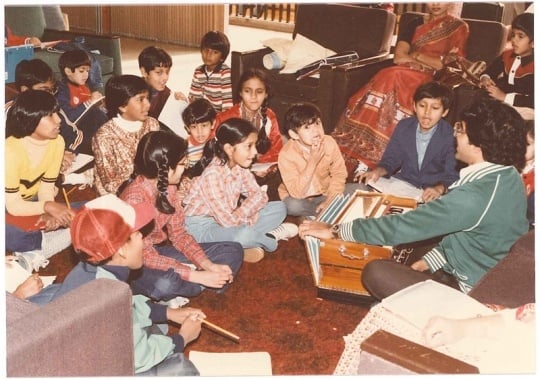
SILC class
A class at the School of India for Languages and Culture (SILC), ca. 1980s.
Holding Location
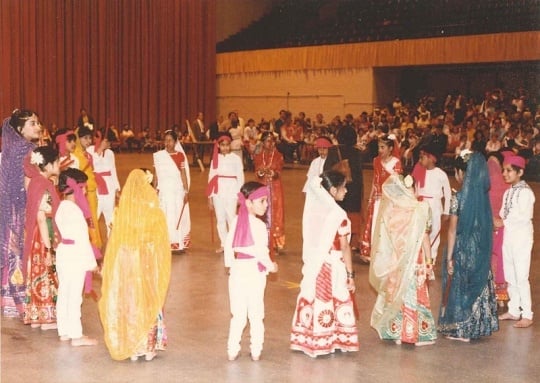
SILC dance performance
Dance performance at the Festival of Nations by students of the School of India for Languages and Culture (SILC), 1981.
Holding Location
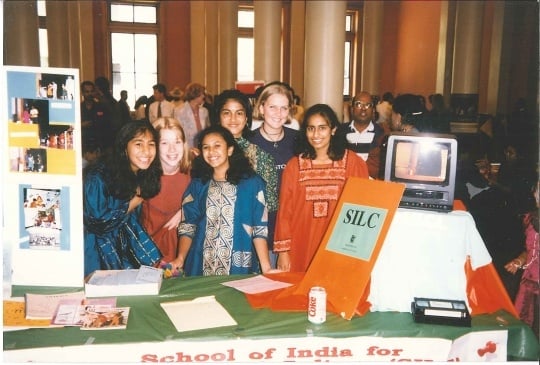
SILC booth at IndiaFest
A booth representing the School of India for Languages and Culture (SILC) at the Festival of India (later renamed IndiaFest) at the Landmark Center in St. Paul, 1992.
Holding Location
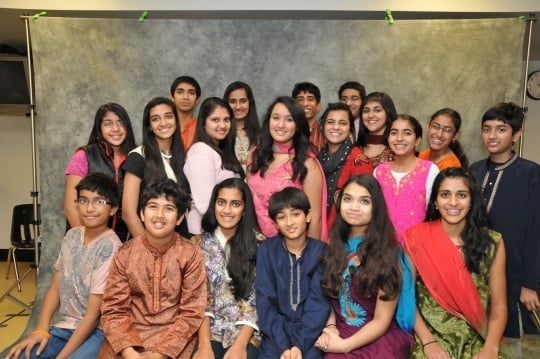
SILC students
Students of the School of India for Languages and Culture (SILC), June 4, 2002.
Holding Location
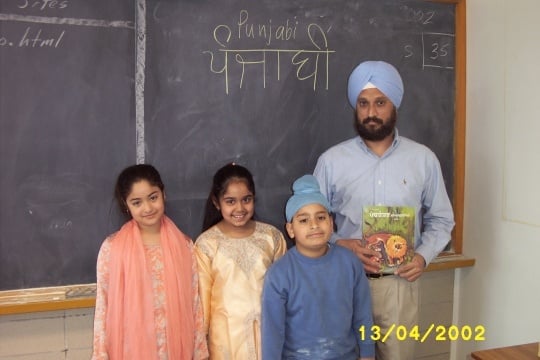
SILC Punjabi class
Punjabi class at the School of India for Languages and Culture (SILC), April 13, 2002.
Holding Location
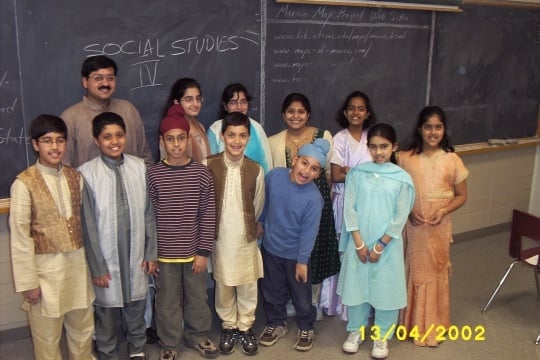
SILC social studies class
Social studies IV class at the School of India for Languages and Culture (SILC), April 13, 2002.
Holding Location
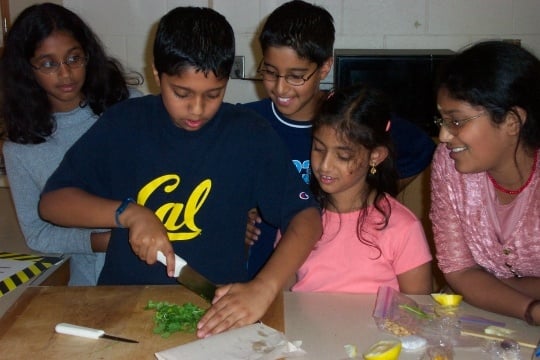
SILC cooking class
Cooking class at the School of India for Languages and Culture (SILC), 2003.
Holding Location
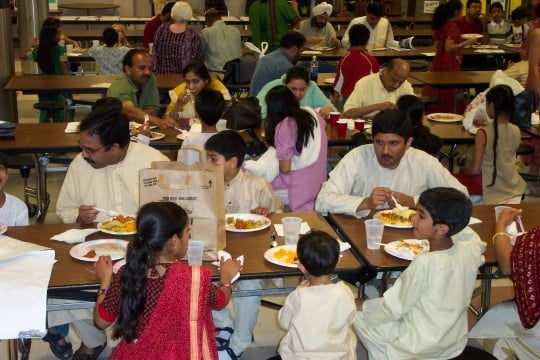
SILC graduation event
School of India for Languages and Culture (SILC) graduation event, 2003.
Holding Location
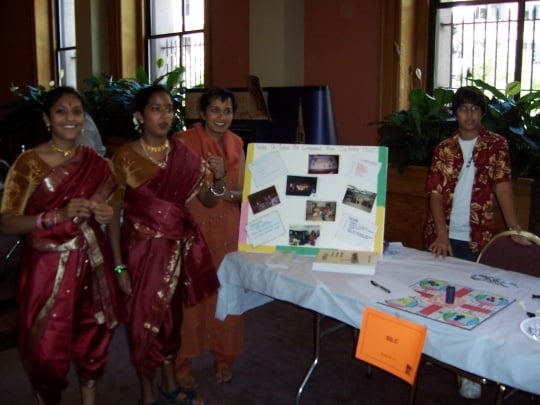
SILC booth at India Day
School of India for Languages and Culture (SILC) booth at India Day, 2004.
Holding Location
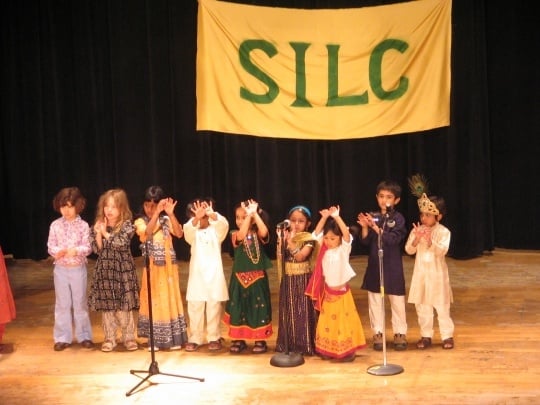
SILC student performance
Performance by students of the School of India for Languages and Culture (SILC), 2006.
Holding Location
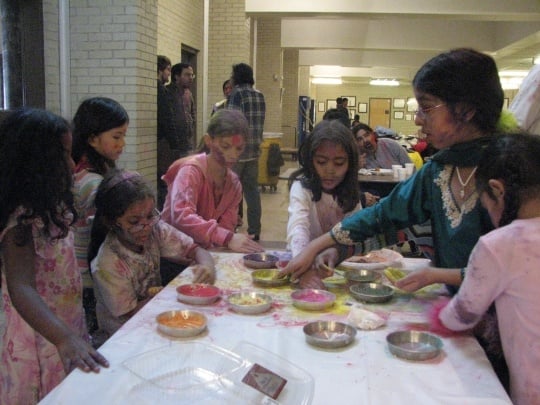
SILC students celebrating Holi
Students of the School of India for Languages and Culture (SILC) celebrate Holi (the Hindu festival marking the arrival of spring), 2007.
Holding Location
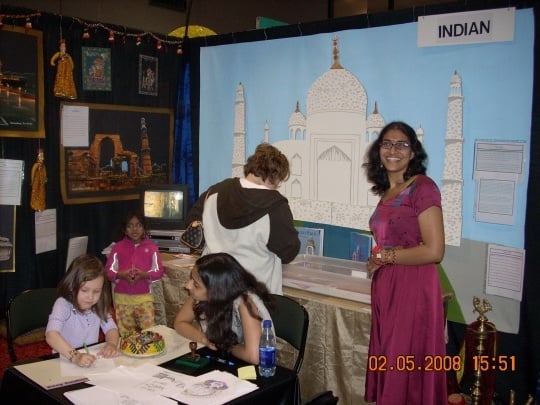
India booth at the 2008 Festival of Nations
The booth representing India at the 2008 Festival of Nations, St. Paul.
Holding Location
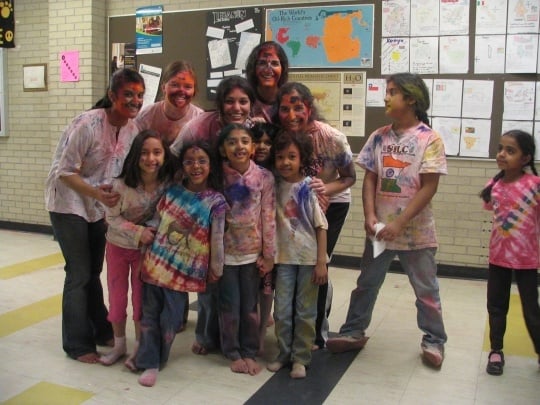
SILC students celebrating Holi
Students of the School of India for Languages and Culture (SILC) celebrate Holi (the Hindu festival marking the arrival of spring), 2009.
Holding Location
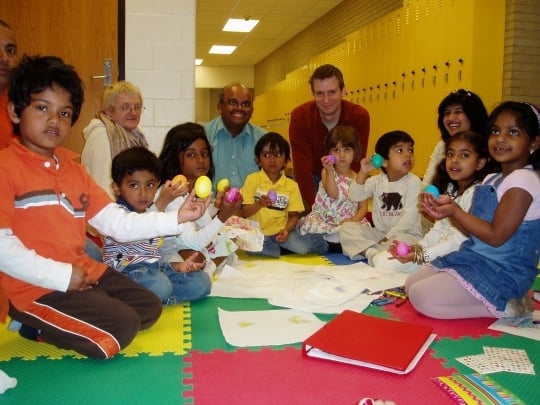
SILC preschool students
Preschool students of the School of India for Languages and Culture (SILC), 2009.
Holding Location
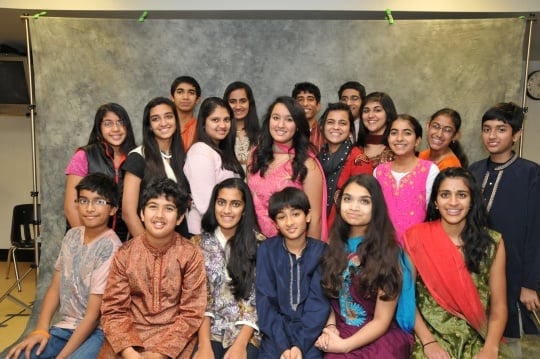
SILC students during Diwali
Students of the School of India for Languages and Culture (SILC) during Diwali, the autumn festival of lights celebrated by multiple religious groups in India, 2011.
Holding Location
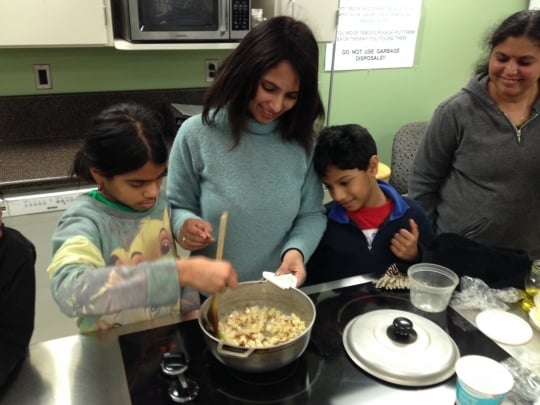
SILC cooking class
An instructor teaches children how to cook as part of a class of the School of India for Languages and Culture (SILC), 2013.
Holding Location
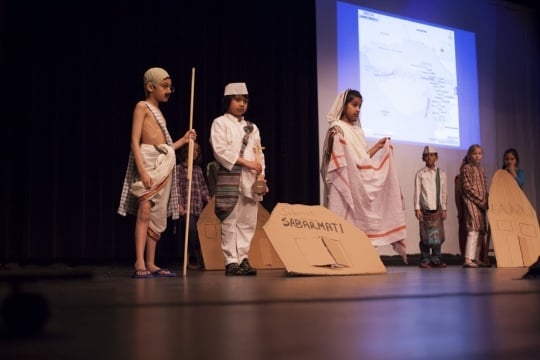
Social Studies Day performance at SILC
A performance at the School of India for Languages and Culture (SILC) on Social Studies Day, May 2014.
Holding Location
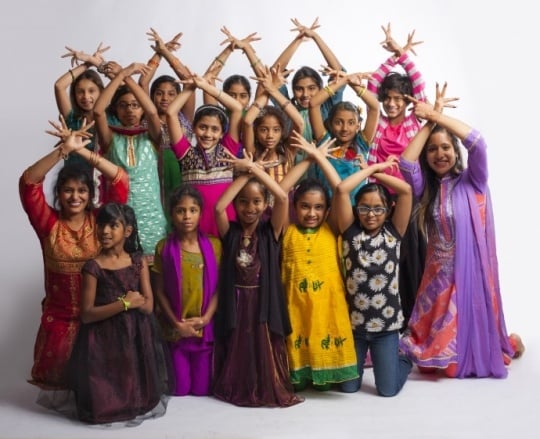
SILC students celebrating Diwali
Students of the School of India for Languages and Culture (SILC) celebrating Diwali (the autumn festival of lights celebrated by multiple Indian religious groups), 2015.
Holding Location
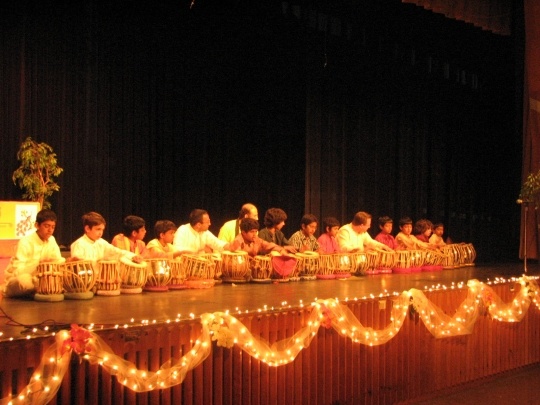
SILC Thirtieth Anniversary Celebration
Tabla (Indian drums) students performing at the Thirtieth Anniversary celebration of the School of India for Languages and Culture (SILC) at Como High School. May, 2008
Holding Location
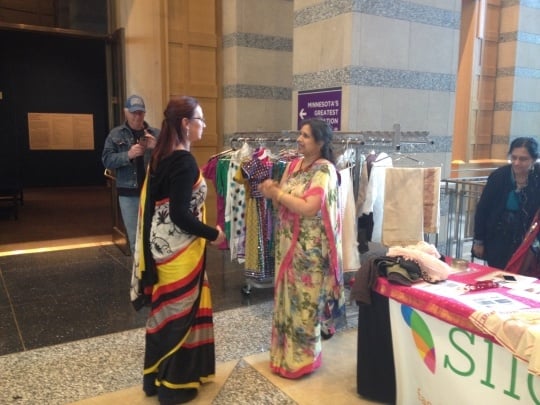
Saree-wrapping demonstration
Staff of the School of India for Languages and Culture (SILC) demonstrating saree wrapping at the Beyond Bollywood exhibit opening at the Minnesota History Center, 2016.
Holding Location
Related Articles
Turning Point
SILC outlasts a decline in enrollment in the early 2000s and continues to be an active Indian American organization in the 2010s.
Chronology
1979
1982
1990
1992
1997
1998
1999
2000
2002
2003
2008
Bibliography
School handbook. Library of the School of India for Languages and Culture, St. Paul.
School of India for Languages and Cultures.
www.silcmn.com
School of India for Languages and Culture yearbooks (1985–89; 1992–93; 1997–2010; and 2015–16). Library of the School of India for Languages and Culture, St. Paul.
OH 88
School of India for Languages and Culture (SILC) Oral History Project
Oral History Collection, Minnesota Historical Society, St. Paul
Description: Twenty-four hours of cassette recordings and 588 pages of transcriptions of interviews with thirteen Indian Minnesotans with connections to the School of India for Languages and Culture (SILC).
http://collections.mnhs.org/cms/display?irn=10469053
Tenth, Twentieth, and Thirtieth Anniversary Commemorative publications (1989, 1999, and 2004). Library of the School of India for Languages and Culture, St. Paul.
Related Resources
Primary
OH 119
India Association of Minnesota Oral History Project
Oral History Collection, Minnesota Historical Society, St. Paul
Description: Includes interviews with members of the India Association of Minnesota (IAM, formerly
known as the India Club), formed in 1973.
http://collections.mnhs.org/cms/display.php?irn=10469083
School of India for Languages and Culture records, 1979–2002
Manuscripts Collection, Minnesota Historical Society, St. Paul
Description: Records of the School of India for Languages and Culture (SILC) which was organized in 1979 to give children of Asian Indian descent in the Minneapolis/Saint Paul metropolitan area a place to learn Indian languages, culture, history, art, dance, music, and yoga.
http://www2.mnhs.org/library/findaids/01292.xml
Secondary
Bhatia, Sunil. American Karma: Race, Culture, and Identity in the Indian Diaspora. New York: New York University Press, 2007.
Junghare, Indira Y. "The Hindu Religious Traditions in Minnesota." In South Asians in the Diaspora: Histories and Religious Traditions, Knut A. Jacobsen and P. Pratap Kumar, eds., 149–160. Boston: Brill, 2004.






















